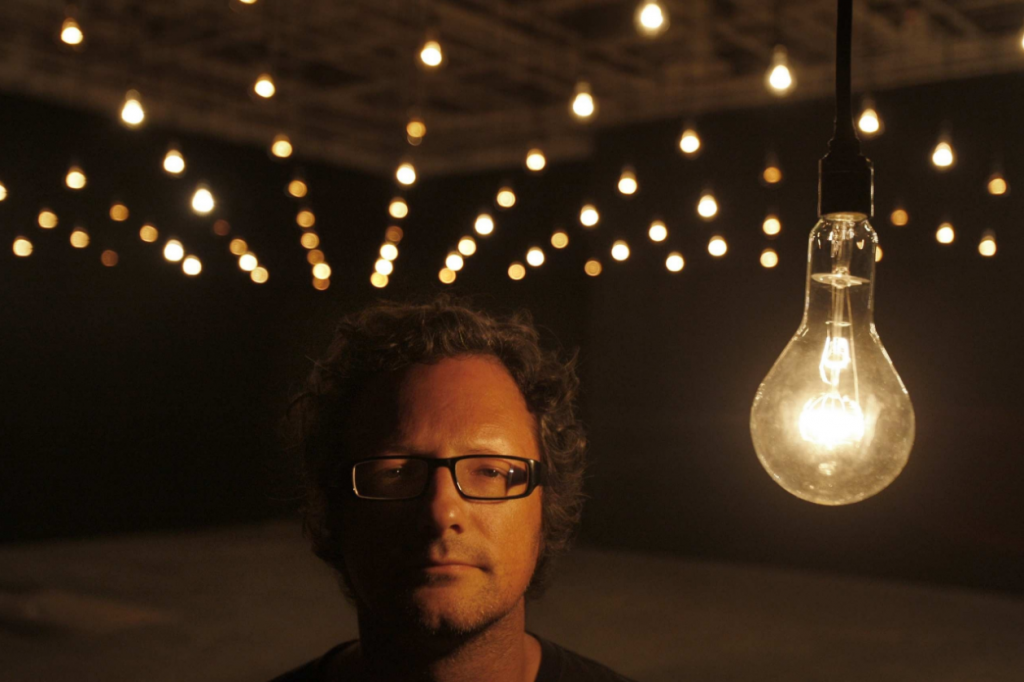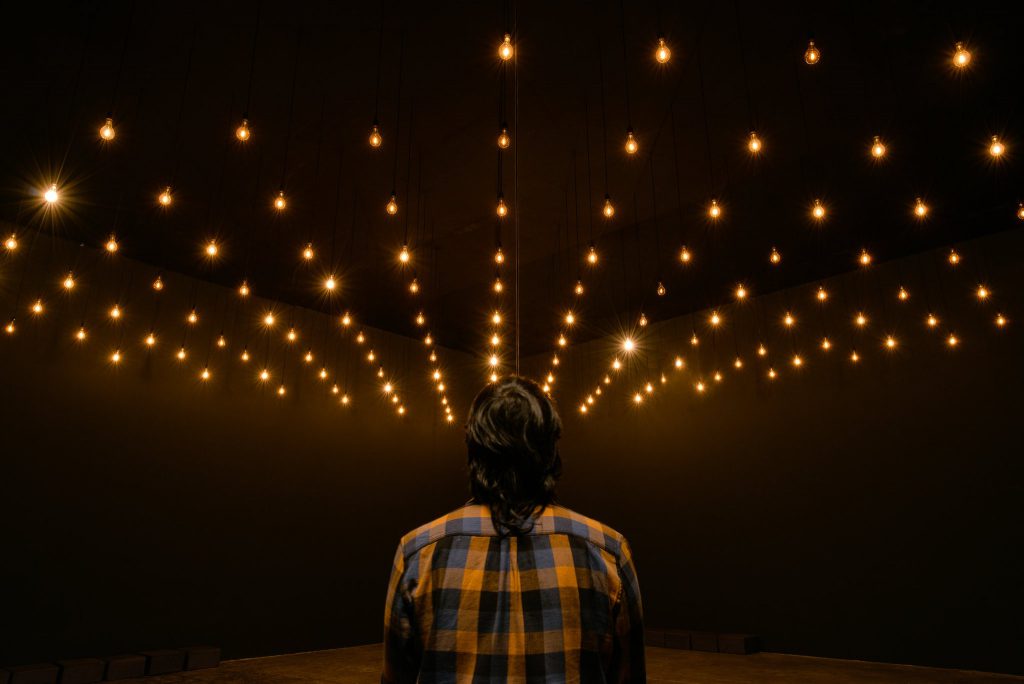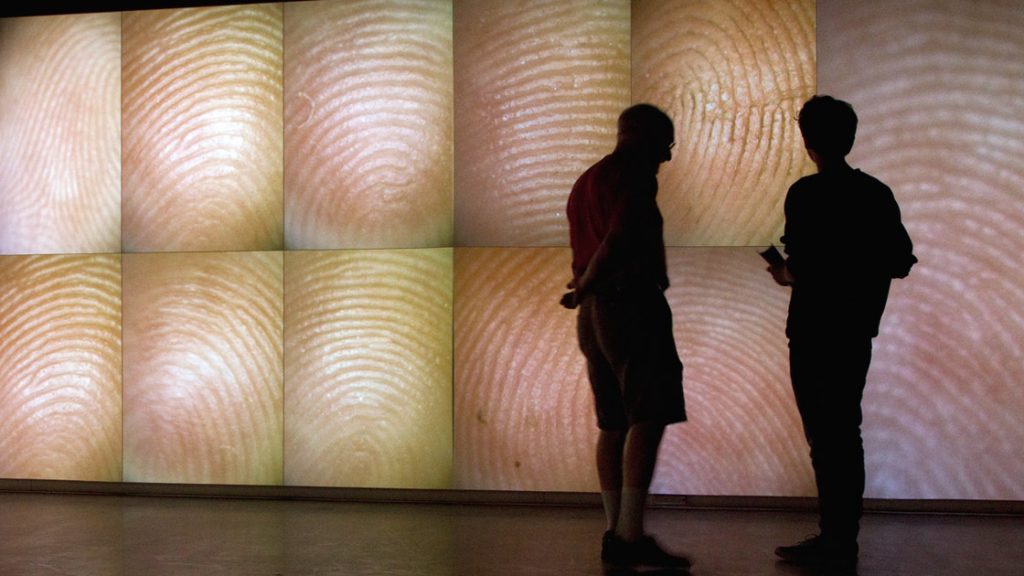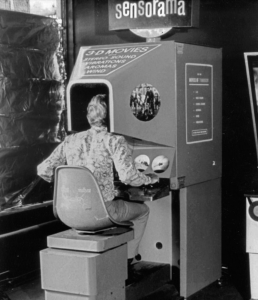INTRO
The development of digitization in art has greatly developed throughout the years. With countless artists pushing the envelope on how art is viewed, felt or – because of the advent of digital media, how it is to be interacted with. Recent developments create intimacy/agency between art and viewer.
ARTIST
Rafael Lozano-Hemmer , the man of the hour, essentially is an electronic artist. A force to be reckoned with in the realm of digital art, he is known for his installations that require the audience’s participation for them to function. Simply put, if nobody visits the exhibition, there is no exhibition.
His works deal mostly with built environment and the immersive experience they provide for the participants while also imbuing hints of theatrics into them.
WORKS
A number of his works are appropriately titled, with “Pulse” preceding the titular object; Pulse Room, Pulse Index, Pulse Tank, and the list goes on. These works heavily rely on audience participation to be powered, by their heart rates.
It is a very interesting process in which the viewers power these machines by the organ that powers them. There is a certain level of intimacy between man and technology as the artworks get powered up.
Pulse Room
An interactive installation that consists of three hundred or so incandescent light bulbs, hung from the ceiling, encompassing the entire room. A sensor is situated in the room that detects the heart rate of the participants.
The moment the sensor comes into contact with the hands of the participant, his/her pulse would activate the artwork, causing the nearest bulb to light up, following his/her heart rate, at its specific rhythm at that point of time. As the viewer lets go, their pulse is transferred to another bulb, the light bulb pulsating as how the heart would. This is repeated until all the lightbulbs have their respective heartbeats from incoming participants.
Pulse Index
An interactive installation where the participants’ fingerprints are recorded concurrently as their heart rates.
With a sensor at the side of the huge room it is exhibited in, the participants’ fingerprints are scanned and immediately projected onto the screen, with their heart rate displayed. The more visitors come, the more fingerprints are displayed into the screen, becoming an immersive experience for the viewer, as the screen pulsate, visually showing their heart beats.
PULSE AND IMMERSION/INTERACTIVITY
The Pulse works deal with participatory and technological aspects, which are key to interactivity.
Quoting Wiener on his idea of cybernetics, which is the:
…“specific acts of communication and transfer of information between the observer and the machine.”
The heart beat from the participant is detected and this information is processed by the machine, and what results is a two way communication between man and machine. Referencing Wiener’s steersman concept of a man controlling something much larger than he is, which is the boat.
Pulse Room connects man and technology, which is a visual representation that we are made up of energy. Upon entering the space, you witness everyone else who have left their heart beats behind, represented by the pulses of the bulbs. The piece gathers the biometric data and translates them into a collective representation.
With this interaction from the audience, the installation is forever changing, the installation is always different on whoever visits it. It is no longer something that is static like a painting which stays the same forever, sans the cracking and peeling of paint. The shadows casted, the rhythm of the pulses vary every time someone else places their hands on the sensors, changing the dynamic of the light show. If a group of participants who just had a run interacts with the piece, the results of their light show would be different from the an average group just walking past.
The same holds true for Pulse Index, the viewer will have to interact with the machine for the show to start.
Morton Heilig’s Sensorama in 1962 paved the way to immersion in digital media. From Sensorama to Osmose, the viewer was given the feeling of ‘being there’, to experience the scene vicariously through the stimulation of audio-visual, olfactory, and touch senses.
Osmose deals with full body immersion in an enveloping space, and utilised the said senses ti create pseudo-realistic environmental experience.
For Pulse Index and Pulse Room, Lozano had a similar approach to immersion. With large built environment installations filling up the second level of the Hirshhorn Museum, the participants are sent into an immersive experience by being surrounded by audio-visual experiences by their very own biometric data.
This is different from Osmose in which the immersant is not sent into a virtual world that tries to replicate reality but instead into their very own being. They are engulfed in their life energy, in their existence as they watch their pulse vibrate on screen, reminding them the vitality and fragility of their beings at the same time, as shown the blown out pulsating fingerprints that surround them.
Similarly, by contributing to the mechanism of the machine in Pulse Room, the participant feels that they are part of the work and the light show that ensues send them into an immersive state where they interact with the pulses of other’s in the room.
CONCLUSION
Lastly, I would like to conclude this by stating what Lozano himself said that technology is a language not a tool. Digital has gone through many developments since its inception and is definitely here to stay.
The nature of performance interactive art is that it is ephemeral. The light bulbs in Pulse Room might not last forever, in fact they are banned in many states now, for the energy needed to light them up.
However, the legacy behind these built environment structures are the legacy it leaves behind on the people, not the material. The feeling of that is left on participants as they see an intangible thing such as their heart beats would last in their minds for a long time, impacting their outlook on life in the long run.
References
Federico, C. (2018). Aesthetica Magazine – Rafael Lozano-Hemmer. Retrieved from http://www.aestheticamagazine.com/rafael-lozano-hemmer/
Loos, T. (2018). Rafael Lozano-Hemmer Is a Crowd Pleaser. He’s Also Obsessed With Death. Retrieved from https://www.nytimes.com/2018/10/26/arts/design/rafael-lozano-hemmer-hirshhorn.html
Lozano-Hemmer, R. (2018). Rafael Lozano-Hemmer. Retrieved from http://www.lozano-hemmer.com/
Rafael Lozano-Hemmer: Pulse – Hirshhorn Museum and Sculpture Garden | Smithsonian. (2018). Retrieved from https://hirshhorn.si.edu/exhibitions/rafael-lozano-hemmer-pulse/
Seaman, A. (2018). Artist Rafael Lozano-Hemmer talks about interactive exhibit on display at East Plaza on the Corniche. Retrieved from https://www.thenational.ae/arts-culture/artist-rafael-lozano-hemmer-talks-about-interactive-exhibit-on-display-at-east-plaza-on-the-corniche-1.118547




